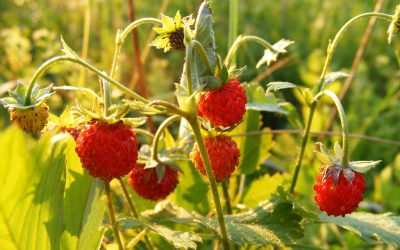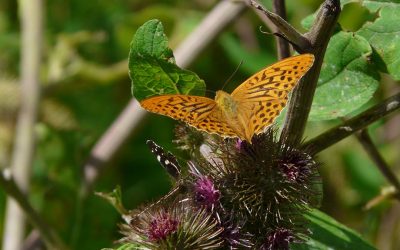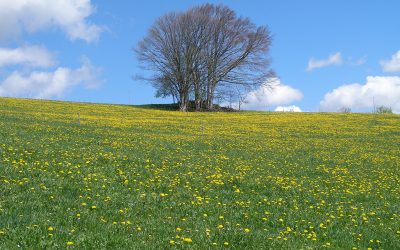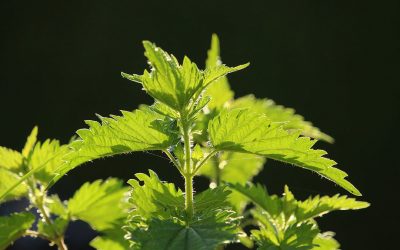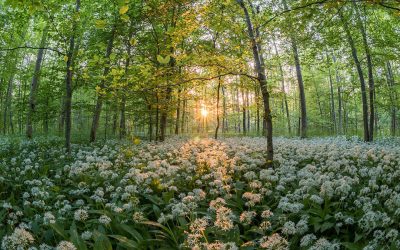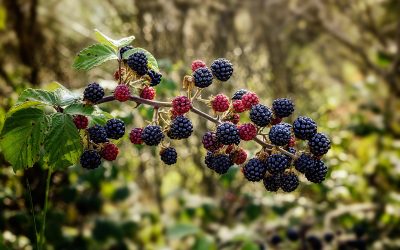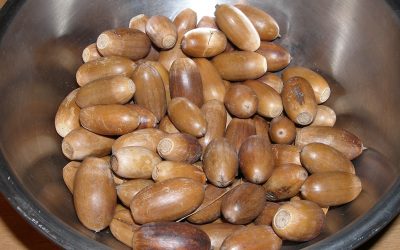Foraging – harvesting nature’s bounty
Collecting nature’s bounty from wild plant sources arguably is the most ancient of human activities. For countless millions of years of our evolution, it was essential to our survival. Even we, as ‘modern’ wo/man, i. e. Homo sapiens, subsisted on hunting and foraging for the greatest part of our existence. Agriculture only entered the picture some 12,000 years ago!
During these last 12,000 years of history, we have come to rely on overbred grains and vegetables while the wild relatives, from which they were once derived, have largely been forgotten. Only in times of extreme hunger and suffering do they re-emerge in our awareness as ‘survival food’. WWII and its aftermath was the last period in history during which large portions of the population supplemented their diet with plants gathered from the wild.
Since the mid-1990s, however, foraging has experienced a ‘renaissance’. In response to an increasingly technologized agriculture, a whole movement of foragers has sprouted. Dissatisfied with bland and nutritionally impoverished industrially-produced fruit and vegetables, foragers have turned to the age-old craft of gathering foods from the wild.
Most of simply seek a kind of culinary adventure, supplementing their regular diets with occasional wild treats. Others fear for their survival as environmental disasters loom and feel driven to learn ‘survival skills’. But some foragers go to the extreme and explore the frontiers of wild food delicacies. These are gourmet foragers, and their adventures in wild foods are a far cry from those of the survivalist.
Foraging as a craft
This section of this website explores the craft of foraging. Articles explore a variety of edible wild plants and their culinary potential. It includes recipes and tips on when, how and what to gather and how to preserve or prepare your harvest.
Caution:
Just because something is natural does not mean it is safe to eat! Some plants are edible only during a particular stage of their development, or may need special preparation to make it edible. Allergies and contamination can also be a problem. Before attempting to gather any plants for culinary purposes, make sure you can positively identify and safely distinguish it from any possible poisonous look-alikes. Please read and internalize the foraging rules before you start with any self-experimentation.
Disclaimer:
The information given in these pages is for educational purposes only.
Foraging Wild Strawberries
I adore wild strawberries! As far as I am concerned they are the ULTIMATE wild food.
Burdock – Arctium Lappa
Burdock may not be the prettiest herb, but it is certainly one of the most eye-catching. Its huge leaves and burly flowers are highly conspicuous. And it has plenty to offer.
Foraging Dandelion
Everybody loves Dandelions! Nothing gladdens the heart more than the sight of a meadow covered in its bright yellow bloom.
Stinging Nettles
Few herbs are as generous as the humble stinging nettle. Inconspicuous, it assumes a modest corner in the garden: untended areas, half in the shade, perhaps near the compost where the soil is rich with nitrogen. Inconspicuous that is, until one happens to brush against it carelessly – which jolts our awareness rather painfully.
Foraging Ramsons
Wild Garlic, or Ramsons are a forager’s delight! A marvellous spring tonic and delicious wild kitchen treat, this versatile herb can be used in many ways. This Pesto is just one idea.
Blackberries (Rubus fruticosus)
Autumn equinox always arrives with a shock: summer is over, winter is on the approach! How can that be? It seems only such a short while ago that we laughed and played in the summer sun! But all too soon I hear the equinox winds hurling outside my window and watch...
Acorns
I don't know why I have been ignoring acorns all this time. But this year, out of nowhere, it suddenly struck me that I should give them a try. Oaks are quite plentiful in my region and thus acorns are not in short supply. And so, I unexpectedly found myself filling...

